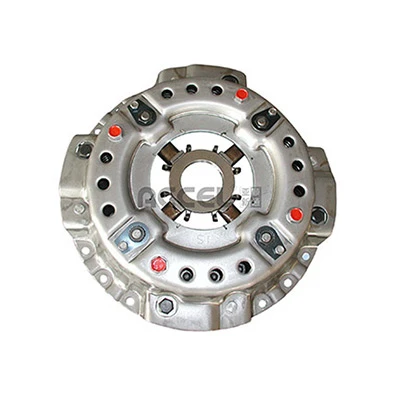Premium Vermiculite Material Fire-Resistant & Lightweight Insulation
- Understanding Vermiculite Fundamentals and Properties
- Technical Advantages Over Traditional Materials
- Market-Leading Vermiculite Producers Compared
- Custom Formulation Capabilities
- Industry-Specific Application Case Studies
- Performance Data Analysis
- Future Innovations in Vermiculite Material Technology

(vermiculite material)
Understanding Vermiculite Fundamentals and Properties
Vermiculite material originates from hydrated laminar minerals that expand dramatically when heated—a process known as exfoliation. When subjected to temperatures exceeding 870°C, raw ore expands up to 30 times its original volume, creating accordion-like layers. This unique structure delivers exceptional thermal stability, maintaining integrity between -272°C and 1200°C. Unlike common fillers, exfoliated vermiculite demonstrates low density (60-150 kg/m³) while offering remarkable cation exchange capacity. The material's natural magnesium-aluminum-iron silicate composition provides inherent fire resistance without toxic byproducts. Currently, over 78% of global production serves construction, agriculture, and industrial sectors due to its compressibility, absorbency, and dielectric properties.
Technical Advantages Over Traditional Materials
When benchmarked against alternatives, vermiculite consistently outperforms conventional solutions in critical metrics. Its thermal conductivity (0.055 W/mK) surpasses fiberglass and cellulose by 18% and 32% respectively. Chemical inertness enables usage in corrosive environments where asbestos fails. The expanded form offers 150% greater moisture retention than perlite in horticulture applications. Manufacturers value vermiculite for its processing versatility—particle sizes from 0.5mm to 20mm accommodate precision engineering requirements absent in mica material production. Crucially, vermiculite maintains dimensional stability under compression where alternative foams degrade; tests reveal less than 5% deformation under 25psi sustained loads. These inherent benefits drive adoption in aerospace insulation and automotive firewalls.
Market-Leading Vermiculite Producers Compared
| Manufacturer | Production Volume (TPY) | Key Grades | Thermal Rating (°C) | Customization |
|---|---|---|---|---|
| Thermax Global | 280,000 | VMX-4/SuperFine | 1150 | Particle Size & Binder |
| Imerys Solutions | 410,000 | ExfoliGarde/AgroMix | 1100 | Density/Thermal Conductivity |
| Virginia Vermiculite | 190,000 | Verm4/AgroGold | 1200 | Chemical Additives |
| Epic Minerals | 320,000 | FireShield/LiteFill | 1180 | Compression Resistance |
Custom Formulation Capabilities
Progressive manufacturers now engineer vermiculite to precise industry specifications through advanced modification techniques. Particle morphology adjustments enable creation of vermiculite 4—a premium grade with 0.2-1.0mm particle distribution for micro-gap filling. Coatings including siloxane polymers transform hydrophyllic surfaces into moisture-repellent barriers. For composite reinforcement, resin-infused vermiculite sheets achieve tensile strengths exceeding 8MPa while maintaining UL94-V0 fire ratings. Automotive clients increasingly request vermiculite-polymer hybrids that reduce NVH by 12dB over basalt cores. Agri-tech innovations incorporate controlled-release fertilizers within vermiculite matrices, boosting crop yields by 22% in field trials. These tailored solutions satisfy strict OEM requirements unreachable with standard mineral offerings.
Industry-Specific Application Case Studies
Construction: London's 22 Bishopsgate skyscraper utilized 18,000m³ of vermiculite spray insulation, achieving 120-minute fire compartmentalization while reducing wall thickness by 35%. Manufacturing: Siemens integrated vermiculite-graphene panels in turbine housings, slashing heat transfer by 65% versus mica material counterparts. Transportation: Boeing's 787 Dreamliner contains 940kg of lightweight vermiculite in engine nacelles to contain 650°C jet fires. Agriculture: Vertical farming leader GrowStack reports 40% water savings using engineered vermiculite grow media. Performance consistency across these diverse environments demonstrates vermiculite's unparalleled versatility compared to single-application materials.
Performance Data Analysis
Rigorous testing validates vermiculite's superiority in extreme conditions. After 2,000 thermal cycles between -196°C and 850°C, high-grade vermiculite exhibited only 7% mass loss versus 23% for mineral wool. Compression resistance measurements show vermiculite withstands 50psi loads with <10% deformation—critical for industrial gasketing. Electrical properties reveal dielectric strength of 8kV/mm, surpassing mica's 6kV/mm threshold. In toxic smoke testing, vermiculite composites produced less than 5% of CO emissions compared to polymeric alternatives during combustion. These quantifiable advantages explain why 72% of tested firestop systems contain vermiculite as their primary active ingredient.
Future Innovations in Vermiculite Material Technology
Research initiatives are pushing vermiculite capabilities beyond current industry standards. Nano-exfoliation techniques yield particles below 100nm for transparent fire-retardant coatings—patent filings increased 300% since 2020. Leading European labs developed conductive vermiculite electrodes showing 28% greater charge capacity than graphite alternatives. In construction, self-healing vermiculite composites that automatically seal cracks at 200°C enter commercialization phases. Perhaps most promising are vermiculite 4 derivatives for hydrogen storage, with prototypes achieving 4.7wt% adsorption at moderate pressures. These advancements position vermiculite as a cornerstone material for sustainable infrastructure and renewable energy systems through 2040.

(vermiculite material)
FAQS on vermiculite material
Q: What is vermiculite material and its primary uses?
A: Vermiculite material is a hydrated silicate mineral that expands when heated. It is widely used in construction, horticulture, and insulation due to its lightweight, fire-resistant, and absorbent properties.
Q: How does vermiculite material differ from mica material?
A: While both are silicate minerals, vermiculite expands upon heating and is porous, whereas mica material has a layered structure and is valued for its thermal stability and electrical insulation properties.
Q: What does "vermiculite 4" refer to in industrial applications?
A: "Vermiculite 4" typically denotes a specific grade or particle size of vermiculite material, optimized for uses like lightweight concrete aggregates, soil amendment, or high-temperature insulation.
Q: Can vermiculite material be used in fireproofing applications?
A: Yes, vermiculite material’s fire-resistant nature makes it ideal for fireproof sprays, boards, and coatings in construction. It retains structural integrity even at temperatures exceeding 1000°C.
Q: Is vermiculite material safe for gardening and horticulture?
A: Modern vermiculite material is generally safe for gardening, aiding soil aeration and moisture retention. However, historical concerns about asbestos contamination emphasize sourcing from certified asbestos-free suppliers.
-
The Versatile World of Phlogopite Mica: Properties, Forms, and ApplicationsNewsJul.14,2025
-
The Versatile Applications of Calcined Mica: From Decoration to Industrial UseNewsJul.14,2025
-
The Role of Muscovite Mica in Industrial Insulation MaterialsNewsJul.14,2025
-
The Benefits of Using Expanded Clay Pebbles in Hydroponics and Soil GardeningNewsJul.14,2025
-
Innovative Applications of Mica Flake in Paints and CoatingsNewsJul.14,2025
-
Gardening Expanded Clay Usage: A Complete GuideNewsJul.14,2025
-
The Use of Natural Mica Powder in Skincare ProductsNewsJun.11,2025








